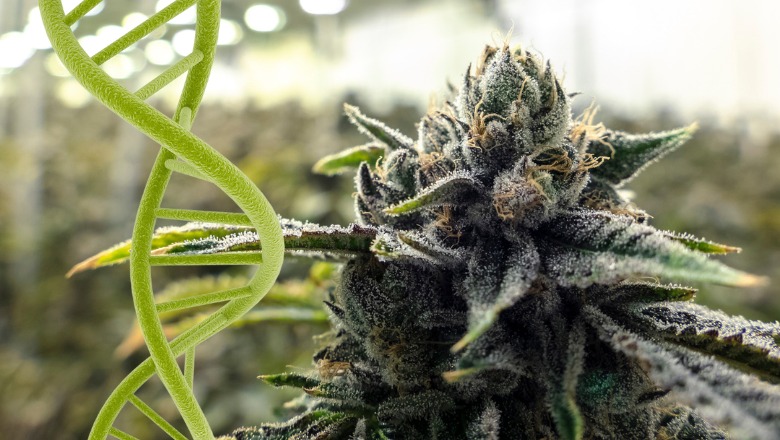As the cannabis industry continues to expand and evolve, the development of new cannabis strains has become a focal point of innovation. Whether for recreational use, medicinal applications, or wellness benefits, cannabis strains have diversified in recent years. From unique terpene profiles to specific cannabinoid ratios, breeders are constantly working to create strains that meet specific needs and preferences. This blog post explores the future of cannabis strain development, highlighting emerging trends, technological innovations, and the factors driving these changes.
The Growing Demand for Customization
One of the key drivers in the future of cannabis strain development is the growing demand for customization. Consumers are no longer satisfied with generic strains—they want specific effects, flavors, and cannabinoid profiles that suit their individual needs. As cannabis becomes more mainstream, people are seeking strains tailored for specific experiences, whether for relaxation, energy, pain relief, or even creativity.
Tailored Cannabinoid Profiles
Cannabinoids like THC (tetrahydrocannabinol) and CBD (cannabidiol) have long been the focal point of strain development. However, consumers are becoming increasingly aware that other lesser-known cannabinoids—such as CBG (cannabigerol), CBN (cannabinol), and CBC (cannabichromene)—also contribute significantly to the overall experience. As a result, breeders are working to create strains with more balanced or targeted cannabinoid profiles to cater to a wider range of needs.
For instance, CBG, often dubbed the “mother of all cannabinoids,” is gaining attention for its potential therapeutic properties, including anti-inflammatory and anti-bacterial effects. By focusing on strains that naturally produce higher concentrations of CBG, breeders aim to provide consumers with alternatives to more well-known strains that might not work for everyone.
Focus on Terpene Diversity
Terpenes—the aromatic compounds found in cannabis—have been found to play a crucial role in the effects of cannabis. Known for their ability to enhance or modulate the effects of cannabinoids, terpenes are now a significant focus of cannabis breeding. Linalool, myrcene, and limonene are just a few examples of terpenes that have specific effects on mood, relaxation, and overall experience.
Future strain development will likely focus on expanding the terpene profiles in cannabis, producing strains with distinct scents and effects that cater to different preferences. For example, strains with a higher concentration of limonene may appeal to users seeking an uplifting and energetic experience, while linalool-dominant strains could be more suited for those looking to unwind and de-stress.
Innovations in Breeding Technology
While traditional breeding techniques have been used to develop cannabis strains for centuries, modern technology is taking this process to new heights. With advancements in genomics, biotechnology, and data analysis, the future of cannabis strain development looks more sophisticated and precise than ever before.
Genetic Sequencing and CRISPR Technology
Genetic sequencing is one of the most promising innovations in cannabis strain development. By analyzing the DNA of different cannabis plants, breeders can identify specific genes responsible for desirable traits, such as high cannabinoid content, resistance to pests, or unique terpene profiles. This allows for more efficient and targeted breeding, reducing the trial and error process.
CRISPR technology, a revolutionary gene-editing tool, has the potential to further accelerate strain development. CRISPR can be used to modify specific genes in cannabis plants, enabling breeders to enhance certain traits with greater precision. For example, gene editing could allow for the development of cannabis strains with increased cannabinoid content or enhanced resistance to disease, without the need for extensive crossbreeding.

Data-Driven Breeding Techniques
In the future, data-driven breeding techniques will play a significant role in the development of new strains. Using artificial intelligence (AI) and machine learning, breeders will be able to analyze vast amounts of data from various sources—such as environmental conditions, genetic makeup, and consumer feedback—to predict which traits will be most desirable in the marketplace. This will allow for more targeted breeding efforts, ensuring that breeders focus on creating strains that meet current consumer demands.
Furthermore, AI could also assist in predicting the effects of certain strains, based on their genetic makeup, without the need for trial and error. This could drastically reduce the time and resources required to develop new strains.
Sustainability and Eco-Friendly Practices in Strain Development
As the cannabis industry grows, there is an increasing emphasis on sustainability. Future cannabis strain development will need to address environmental concerns, especially as cannabis cultivation can be resource-intensive. The development of more resilient and eco-friendly cannabis strains is an emerging trend in the industry.
Drought-Resistant Strains
Water consumption is one of the biggest challenges facing cannabis growers, especially in areas with limited water resources. In response, breeders are developing drought-resistant cannabis strains that can thrive with minimal water. These strains could prove invaluable in regions where water scarcity is a growing concern, allowing for more sustainable cannabis cultivation practices.
Organic and Pest-Resistant Strains
Another area of focus is the development of cannabis strains that are naturally resistant to pests and diseases. By breeding strains with enhanced resistance to common pests, growers can reduce their reliance on chemical pesticides, leading to cleaner, more environmentally friendly cultivation practices. This not only benefits the environment but also contributes to healthier, higher-quality cannabis products.
The Role of Consumer Preferences in Shaping Cannabis Strains
Consumer preferences will continue to be a significant factor in shaping the future of cannabis strain development. As cannabis becomes more widely accepted and understood, consumers are becoming more discerning about the strains they choose.
Wellness-Focused Strains
As more people turn to cannabis for its wellness benefits, the demand for strains that promote specific health outcomes is on the rise. Future strain development may focus on creating strains that target specific ailments, such as anxiety, insomnia, or chronic pain. These strains could be tailored to provide optimal relief based on cannabinoid and terpene profiles, making cannabis an even more viable option for health-conscious consumers.
Strains for Microdosing
Microdosing, the practice of consuming very small amounts of cannabis for subtle therapeutic effects, is gaining popularity. As more people experiment with microdosing for improved mood, creativity, and focus, breeders are likely to focus on developing strains with lower levels of THC and higher concentrations of CBD, CBG, or other non-psychoactive cannabinoids. These strains could offer a more controlled and balanced experience, ideal for those seeking a gentle, non-intoxicating effect.
Conclusion
The future of cannabis strain development is filled with exciting possibilities. As consumer preferences continue to evolve, breeders will develop strains that cater to specific needs, whether for medical use, wellness benefits, or recreational enjoyment. Advances in genetics, data analysis, and breeding technology will play a crucial role in accelerating this process, allowing for more efficient and precise development of new strains. Additionally, the focus on sustainability and eco-friendly practices will ensure that the cannabis industry grows in a responsible and environmentally conscious manner. Ultimately, the future of cannabis strains will be shaped by both technological innovations and the evolving desires of consumers, making it an exciting time for both growers and enthusiasts alike.

